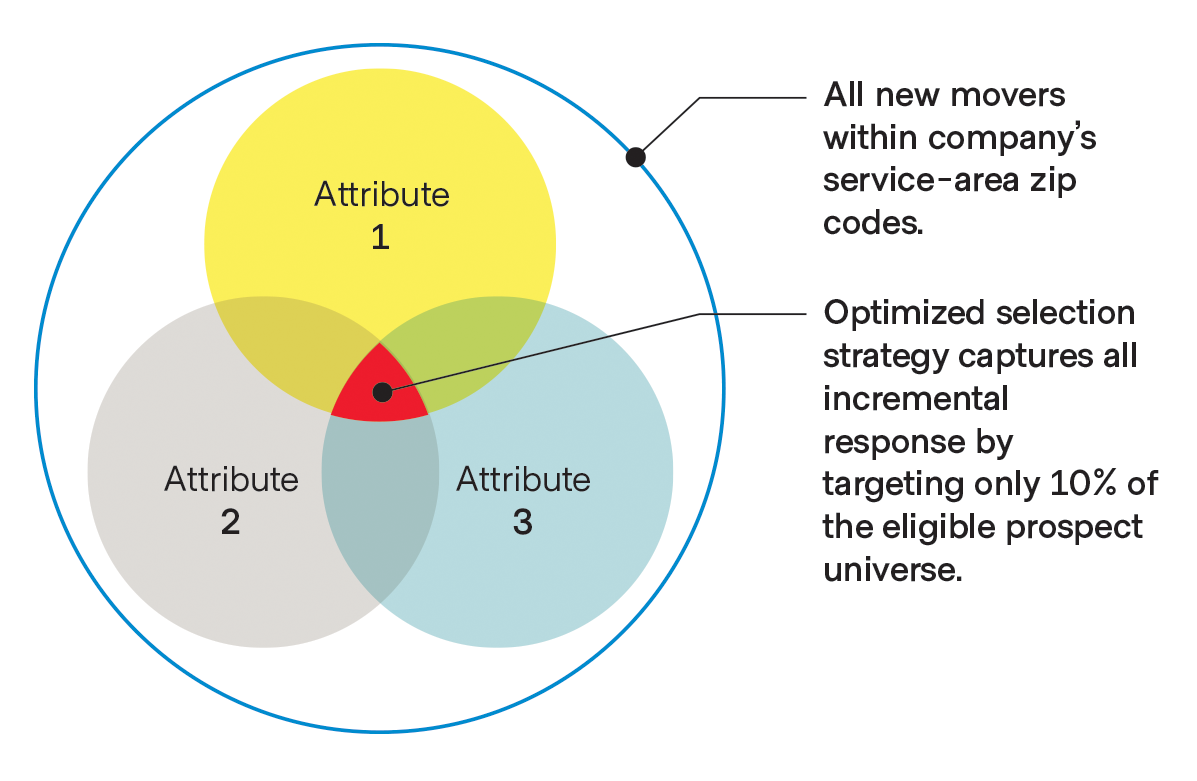Experienced direct marketers know that some campaigns will be miserable failures. They also know that it’s what you learn from the failure that can set you on a course for future success. Our team at Deluxe has a perfect example to share. It happened with a new-mover campaign on behalf of a global communications company.
Our first at bat on behalf of the client was a home run. To help the company attract new customers, we ran a five-month direct mail program targeting households that recently moved to a zip+4 where the company had current customers residing.
This initial pilot campaign generated a 27% increase in gross response rate, as well as a 3x increase in net of control response. Additionally, the treatment group produced an order rate of 0.68% and an activation rate of 73%. Households that received the direct mail piece were 2.5x more likely to become a customer. There was cheering from the stands!
Our next at bat was a strike out. In a perfect world, marketers would tweak as few variables as possible from campaign to campaign. However, we wanted to try some things, and our client wanted to try some things, and it ended up being too much. We had changed the creative, the mail volume, the timeframe, and the targeting approach. As a result, the incremental order rate (lift over the control group) for this campaign was 0.02%, whereas the incremental order rate for the pilot campaign was 0.12%.
Now it was up to our data science team to learn from our failure and get our campaign strategy back on track.
Failure fuels success
After excitedly digging through hundreds of data elements and decile tables, our data science team was able to identify the three attributes that are most predictive for incremental response for this customer. In general, these were related to:
- Distance to closest existing customer
- Customer density
- Population density
By overlapping the three attributes in a Venn diagram, we showed our client that out of the total universe of eligible new movers, they can capture all incremental response by targeting the 10% of prospects who match all three attributes.

Optimizing selection criteria
Based on data from the previous campaigns, our data scientists have predicted that by using the optimized selection criteria – and sending out a drastically reduced volume of mail – we will achieve an incremental order rate of 0.28%. (This campaign is currently underway.)
Our data scientists also found that the remaining 90% of the prospect universe delivers virtually no lift over control. In other words, the prospects who did not possess the three predictive attributes had been negatively affecting previous campaign results.
What we are testing now is whether there is value in mailing to eligible new movers with a combination of just two predictive attributes, and what impact this approach would have on our cost per incremental order.
We’re also evaluating some new data. Under the assumption that many consumers want to arrange internet installation prior to their move-in date, we’ve started looking at campaigns with pre-mover data.
Our team at Deluxe is constantly searching for new opportunities to optimize performance for every campaign. Marketing cannot run on autopilot; you have to keep measuring, hypothesizing, analyzing and testing. There’s something to learn from every campaign – even those that flop.
RECOMMENDED RESOURCES



